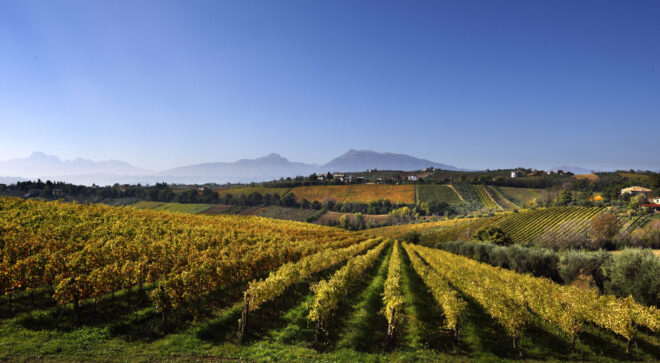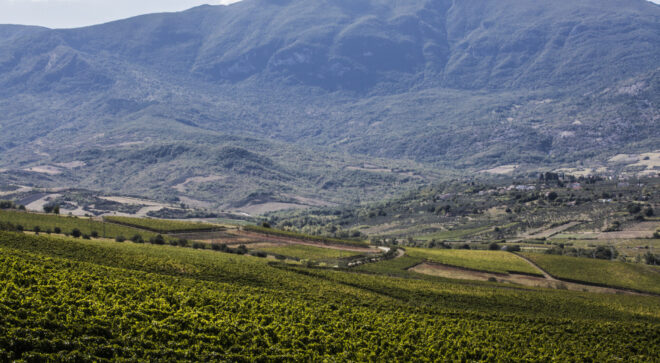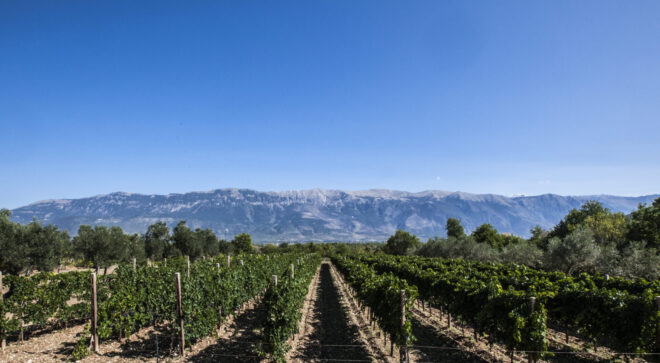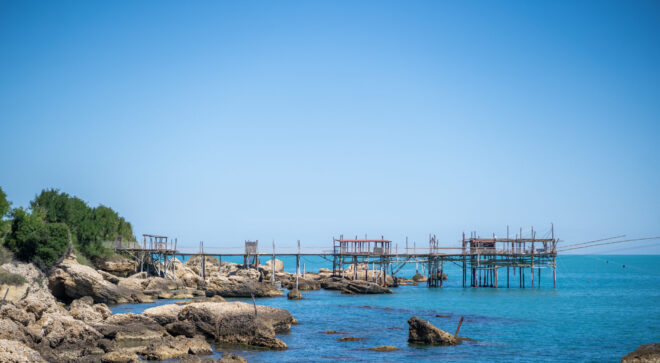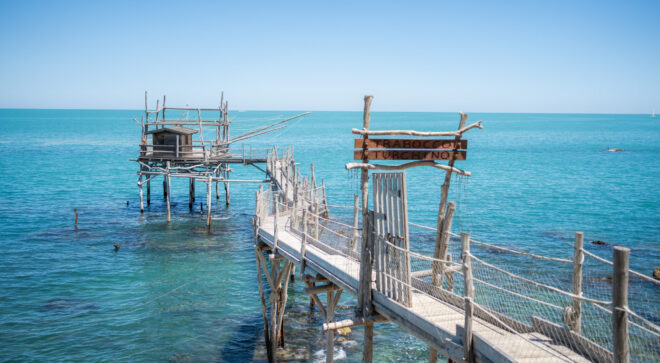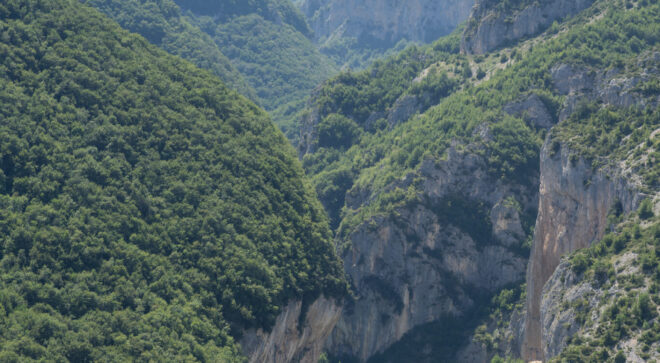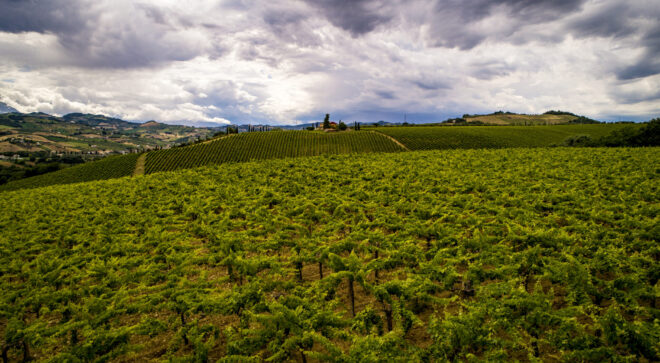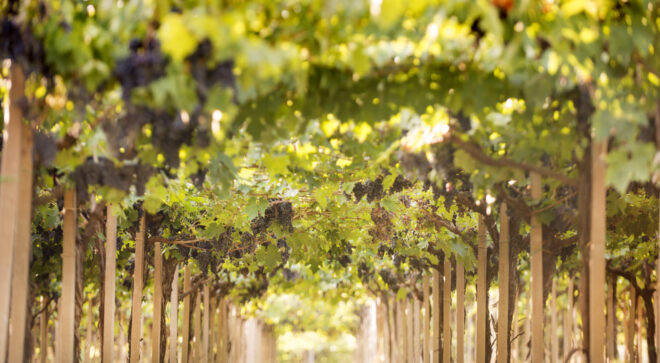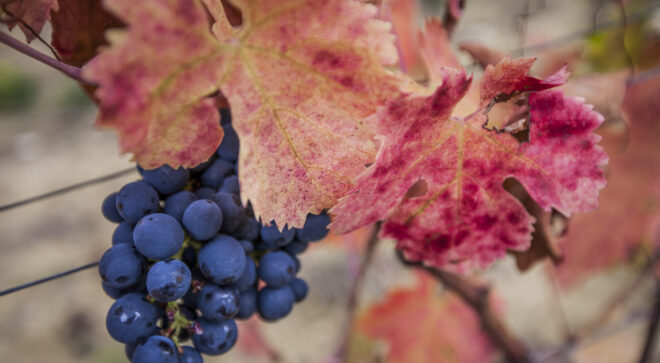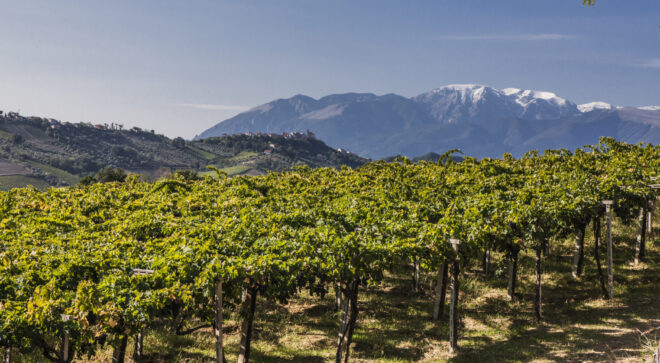- Territory
Abruzzo: a territory dedicated to viticulture
Abruzzo, an Italian region located between the Adriatic Sea and the Apennines, has a lot to offer its visitors. The hinterland consists for the most part of national parks and nature reserves, where there are numerous medieval and Renaissance villages perched on the hills. There are also wonderful coastal areas such as La Costa dei Trabocchi, with sandy coves, which takes its name from the traditional piers for fishing.
Abruzzo is also renowned for its wine culture, synonymous with high quality. The Abruzzo territory, naturally predisposed to viticulture because of its location between the Adriatic Sea and the massifs of the Gran Sasso d’Italia and the Majella, can be divided into two areas: the mountainous interior, which constitutes over 65% of the entire regional territory, and the coastal one with the wide hilly strip.
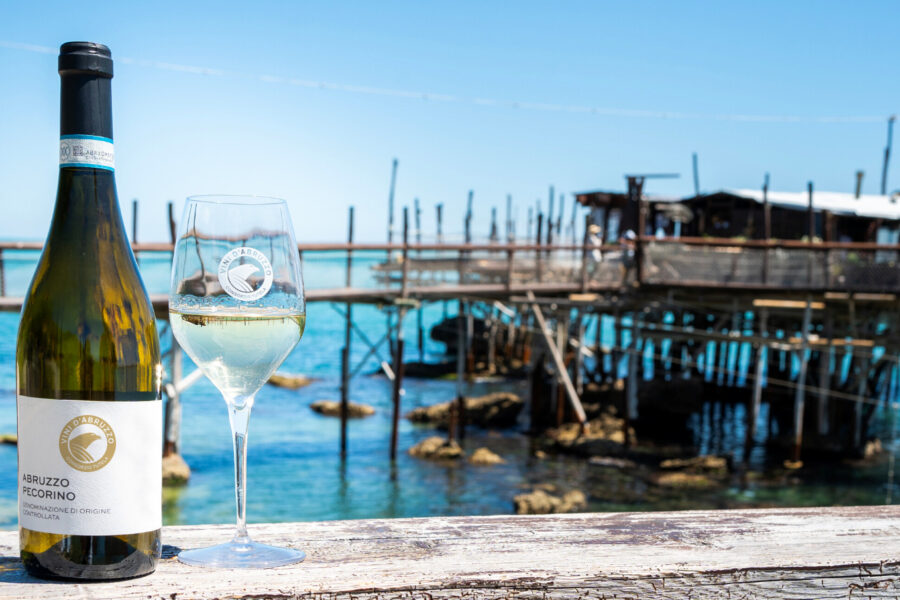
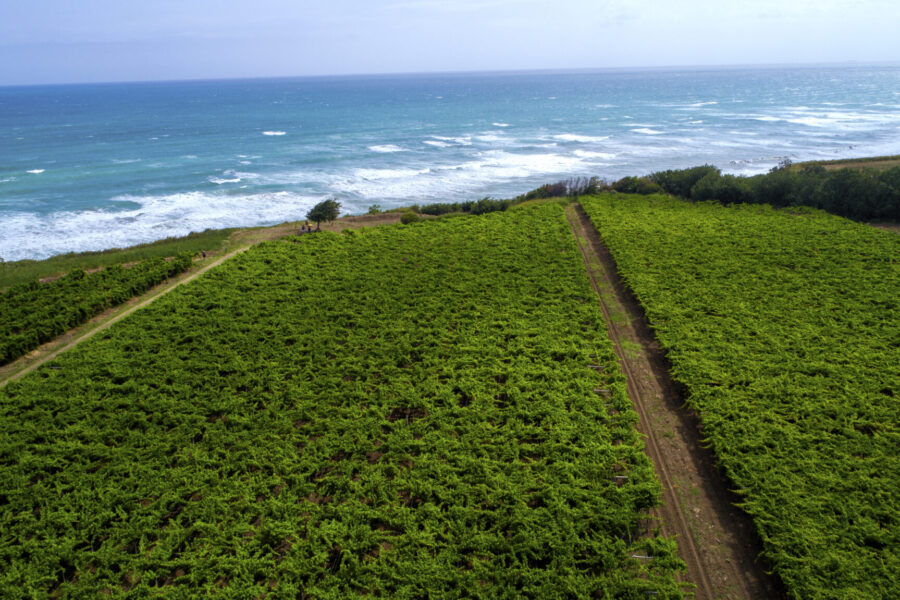
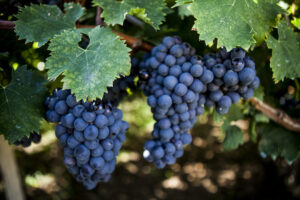
The climate is rather mild on the Apennine side facing the Adriatic, more continental than of the internal basins. Overall, the advantages of good rainfall and high insolation are combined with a generally mild climate. The imposing massifs of Gran Sasso and Majella, located at a short distance from the sea, generate strong temperature variations between day and night which, combined with good ventilation, guarantee the vine an ideal microclimate to vegetate and produce grapes of extraordinary quality.
In addition to the climate and the favorable territory, constant work is also necessary to enhance the territory and its native vines that has been handed down over the years and is now perpetrated by a new generation of producers.
The Oenological Abruzzo is a great reality: it is successful both on the national market and on the international market. The enhancement of the territory and its most important native vines, combined with a new generation of oenologists and wine entrepreneurs, represent its strengths. More specifically, Montepulciano has been considered for several years as one of the great red grape varieties of Italy and represents more than half of the regional ampelographic base, as well as being the reference vine of the Montepulciano d’Abruzzo DOC denomination, which in 2018 turned 50 years old. The white Trebbiano d’Abruzzo is also another important vine that is part of the wine history of the region.
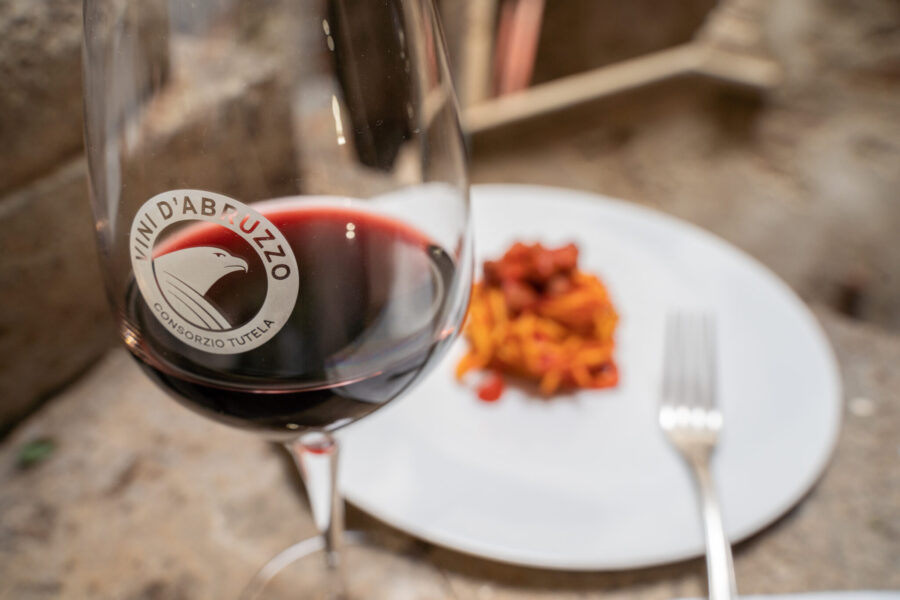
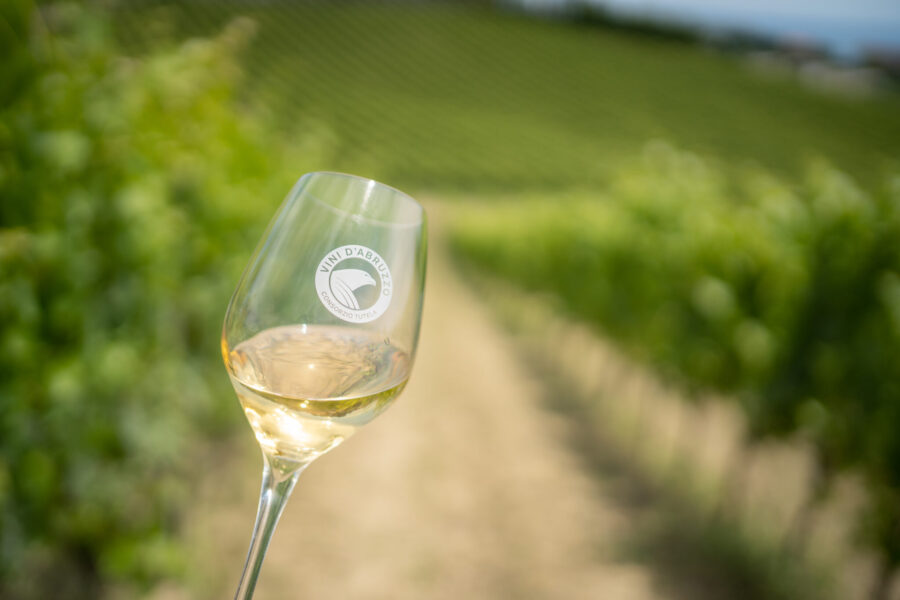
The first evidence of the presence of wine culture in Abruzzo dates to ancient times, in the texts of Ovid, Polybius and Pliny the Elder. Since then, production has spread throughout the region, concentrating in the hilly and coastal area, to evolve rapidly in quality in the last half of the century. To date, over 32,000 hectares of land are used for the cultivation of grapes for an annual production of about 3.5 million hectoliters, of which more than one million are wine appellation. Of these, about 80% consists of Montepulciano d’Abruzzo.
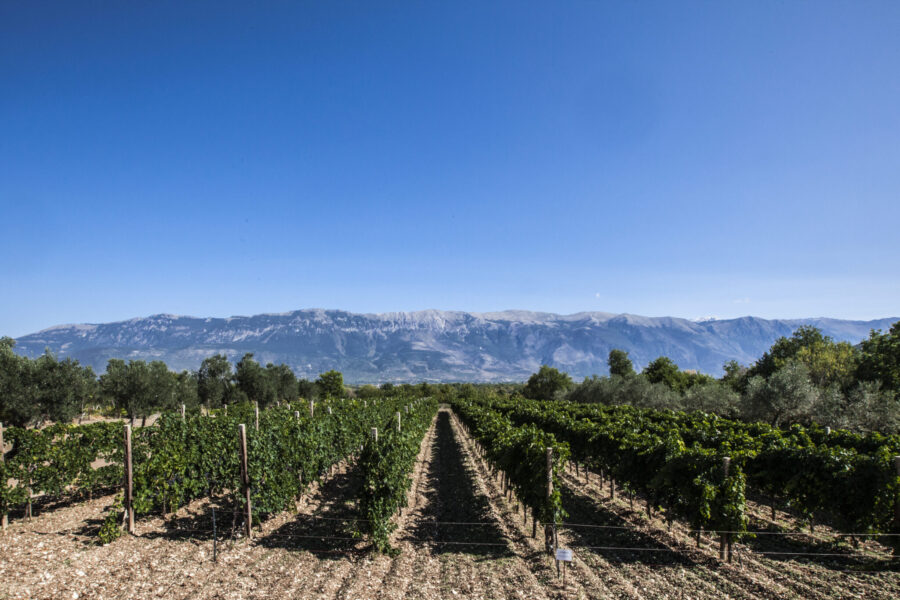
The production areas are concentrated almost entirely in the hilly area: in particular, in the province of Chieti. The most widespread form of breeding in Abruzzo is the Abruzzo pergola, which represents over 80% of the regional vineyard, while in new plants and replanting prevails in most cases the row shape (spurred cordon, free cordon, gdc).
Among the most widespread vines, as mentioned, there are Montepulciano, cultivated on about 17,000 hectares, with a constantly growing trend. Followed by the Trebbiano with over 12000 hectares and a series of native vines. Among the latter, they are distinguished by the growing appreciation of the market Pecorino, Passerina, Cococciola and Montonico.
No results found.
NULL00
No results found.
NULL00
No results found.
NULL00
No results found.
NULL00
NULL00
No results found.
NULL00
No results found.
NULL00
No results found.
NULL00

